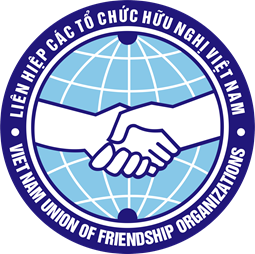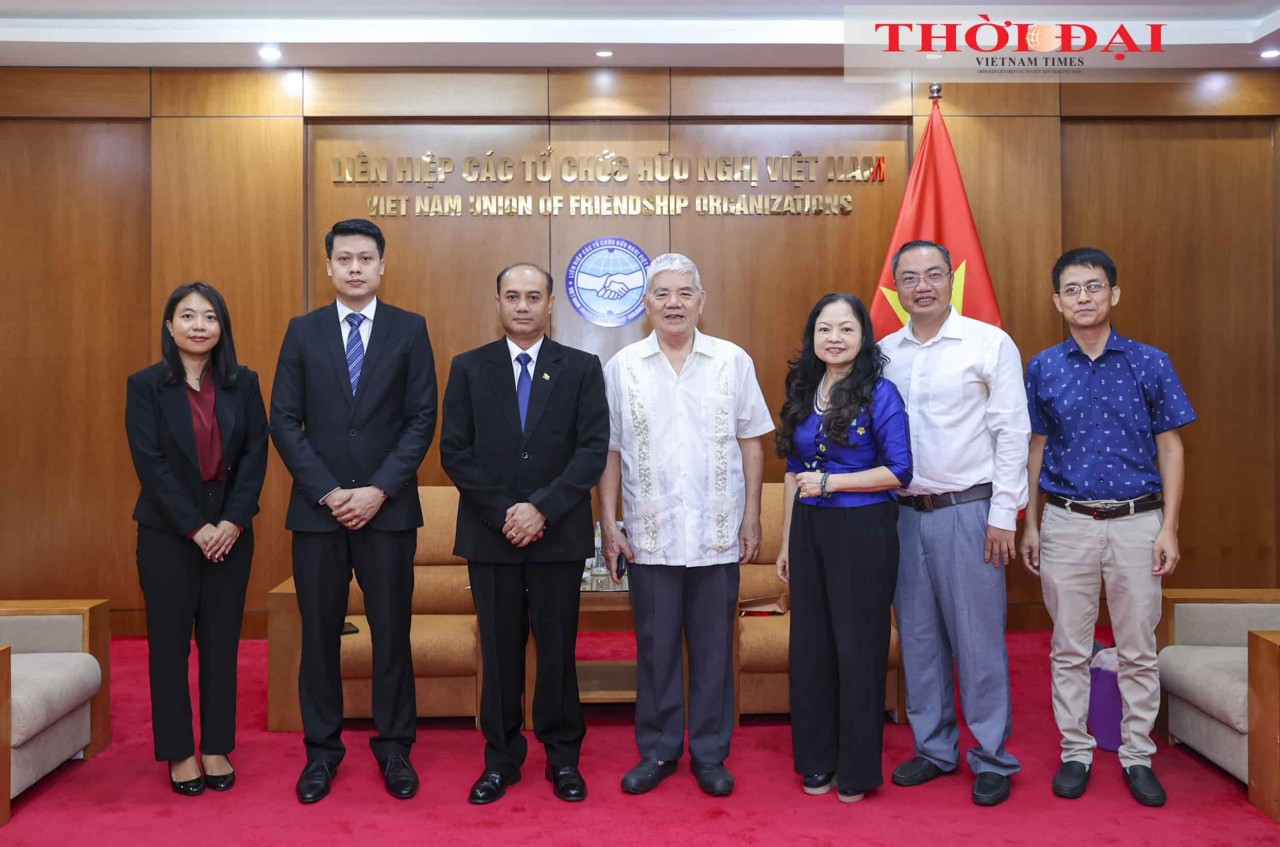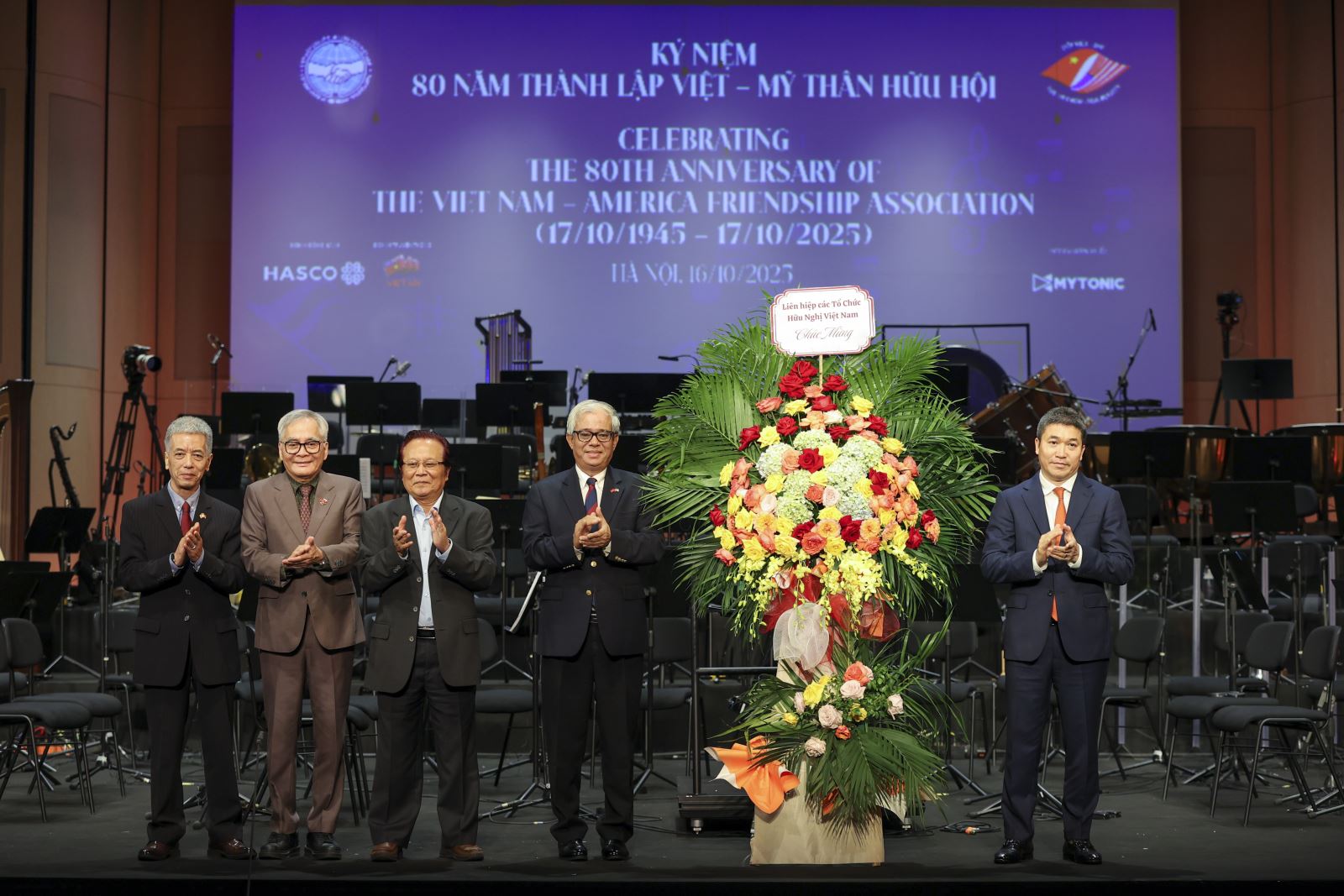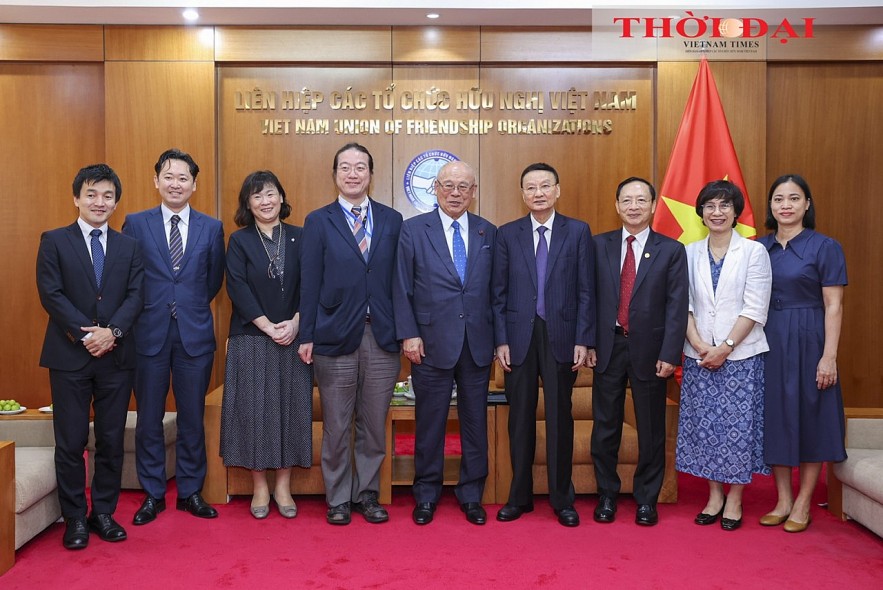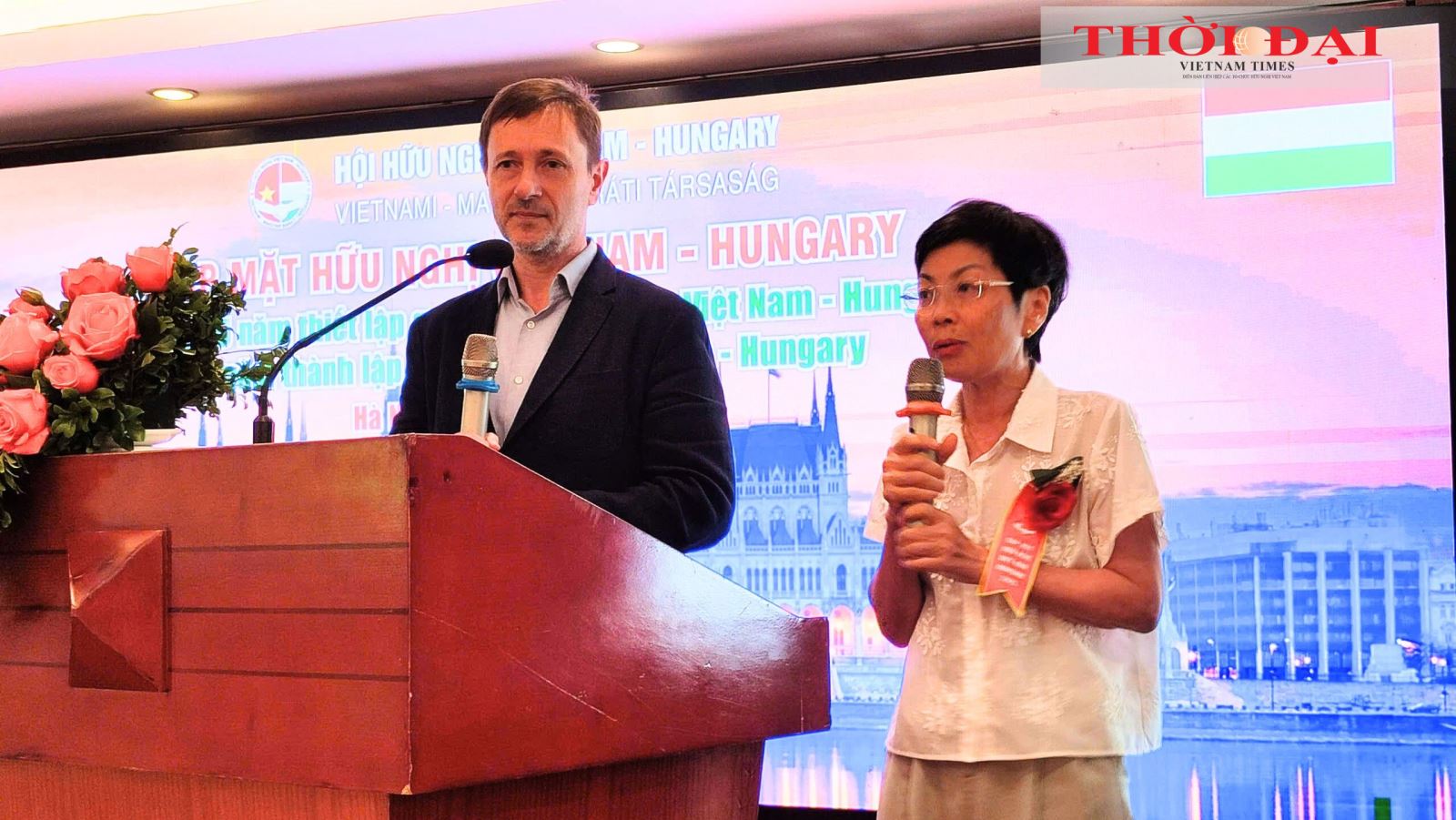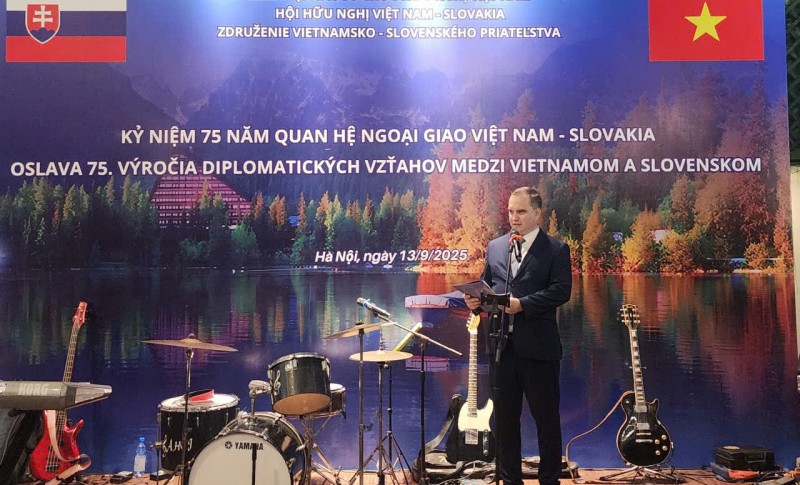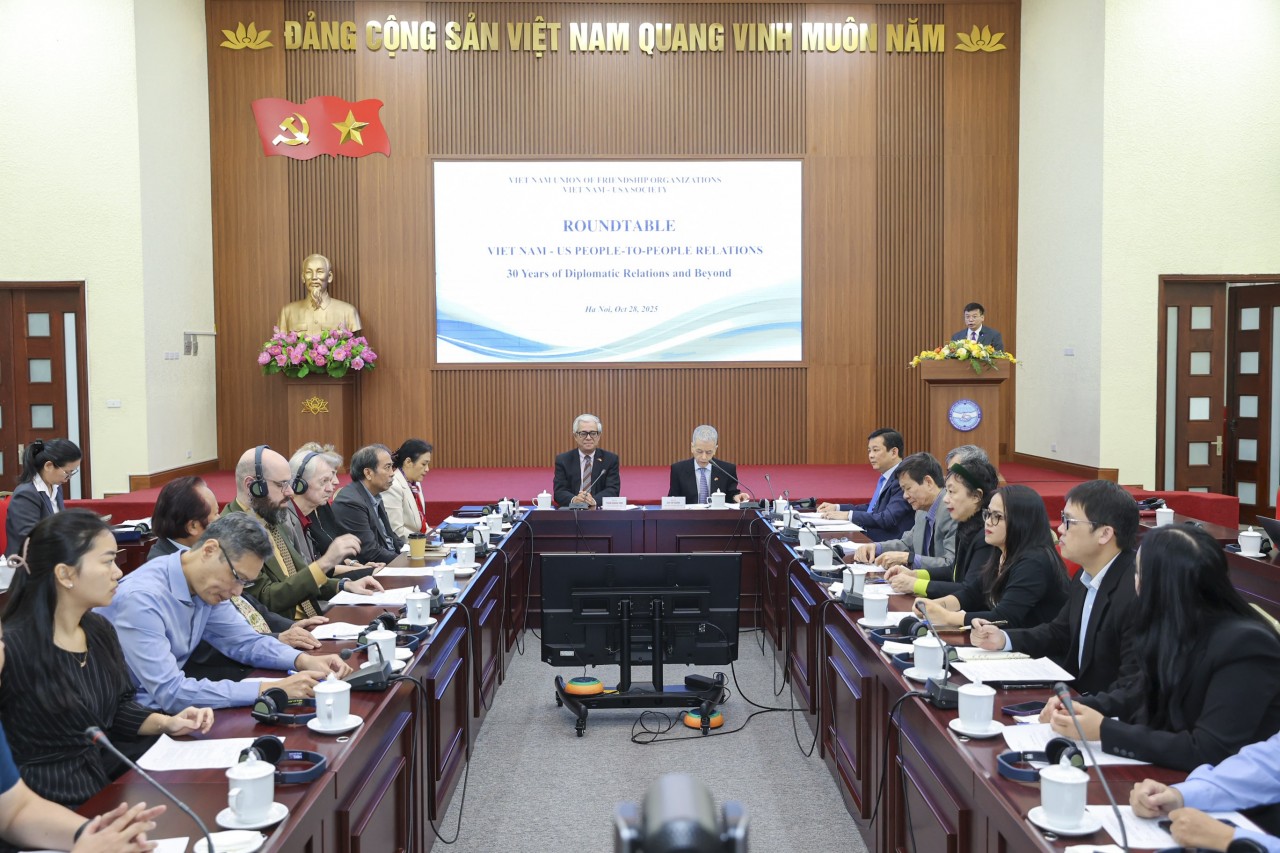 |
| Scene of the roundtable. (Photo: Dinh Hoa) |
In his opening remarks, Ambassador Pham Quang Vinh, President of the Viet Nam-US Society, emphasized that the development of Viet Nam-US relations today is the result of persistent efforts and contributions made by generations of people from both countries. In the new context, people-to-people relations between Viet Nam and the United States should continue to be deepened, serving as a bridge of friendship, mutual understanding, and trust between the two nations.
Ambassador Pham Quang Vinh recalled the remarks of Phan Anh Son, President of the Viet Nam Union of Friendship Organizations, delivered at the ceremony marking the 80th anniversary of the Viet Nam-US Friendship Association, highlighting three key directions for further strengthening Viet Nam-US people-to-people diplomacy: staying aligned with the framework of the Comprehensive Strategic Partnership and promoting people-to-people exchanges as a pillar of bilateral relations; expanding networks of friends and areas of cooperation, not only in humanitarian collaboration and war legacy remediation but also in education, culture, science, innovation, trade, environment, and sustainable development; and spreading the model of Viet Nam-US reconciliation as a testament to the power of sincerity, compassion, and the aspiration for peace.
Cooperation in War Legacy Remediation - Foundation of Viet Nam-US Relations
At the roundtable, both Vietnamese and American delegates discussed various aspects of cooperation in addressing war legacies. According to Chuck Searcy, President of the Veterans for Peace Chapter 160, American veterans were among the first US citizens to actively reconnect with the Vietnamese people and their fellow veterans. Encounters grounded in the spirit of reconciliation and friendship opened the door to mutual understanding and laid the foundation for humanitarian cooperation and healing the wounds of war.
From these experiences and heartfelt empathy, both sides have built bonds of friendship, trust, and mutual respect, values that form the solid foundation of Viet Nam-US relations today. Searcy expressed his confidence that the two nations will continue to nurture peace and a better future for future generations.
 |
| Chuck Searcy, President of Veterans for Peace Chapter 160, speaks at the event. (Photo: Dinh Hoa) |
Hoang Anh Tuan, Head of the International and Scientific Affairs Department of the Viet Nam Association for Victims of Agent Orange/Dioxin (VAVA), stated that Viet Nam and the United States have jointly implemented numerous humanitarian programs and projects. Initiatives supporting victims of Agent Orange and improving the lives of persons with disabilities in dioxin-affected areas, through rehabilitation, livelihood assistance, and community integration, have helped tens of thousands of people overcome difficulties and move forward in life. He noted that the VAVA wishes to further strengthen cooperation with US agencies, organizations, individuals, and international friends to expand the scale and enhance the effectiveness of support activities.
 |
| Le Cong Tien, Deputy Director-General of the Americas Department, Ministry of Foreign Affairs, and Director of the Viet Nam Office for Seeking Missing Persons (VNOSMP), speaks at the event. (Photo: Dinh Hoa) |
Le Cong Tien, Deputy Director-General of the Americas Department under the Ministry of Foreign Affairs and Director of the Viet Nam Office for Seeking Missing Persons (VNOSMP), said that Viet Nam has cooperated with the United States for more than 50 years in humanitarian activities related to the search and accounting for American service members missing in action (MIA) during the war in Viet Nam. These efforts have enabled the identification and repatriation of thousands of American remains to their families.
He noted that MIA cooperation once served as one of the few channels of dialogue between the two countries during the embargo period, helping lay the groundwork for the normalization and establishment of diplomatic relations. He emphasized that in the future, Viet Nam and the United States will continue to work closely in this field, not only to heal the wounds of war but also to strengthen mutual trust, broaden cooperation, and bring tangible benefits to the peoples of both nations.
Proposals for Broader Cooperation Across Multiple Fields
At the seminar, Ambassador Nguyen Phuong Nga, former Deputy Minister of Foreign Affairs and former President of the Viet Nam Union of Friendship Organizations (VUFO), emphasized that Viet Nam-US people-to-people diplomacy should encourage greater participation from the younger generation and expand to include diverse sectors of society, such as representatives from the business community, writers, and artists. She proposed fostering more creative forms of cooperation, such as organizing seminars and Vietnamese literature, film, and music weeks in the United States and vice versa. Such initiatives, she said, would help enhance mutual understanding, promote cultural exchange, and bridge differences between the peoples of the two countries.
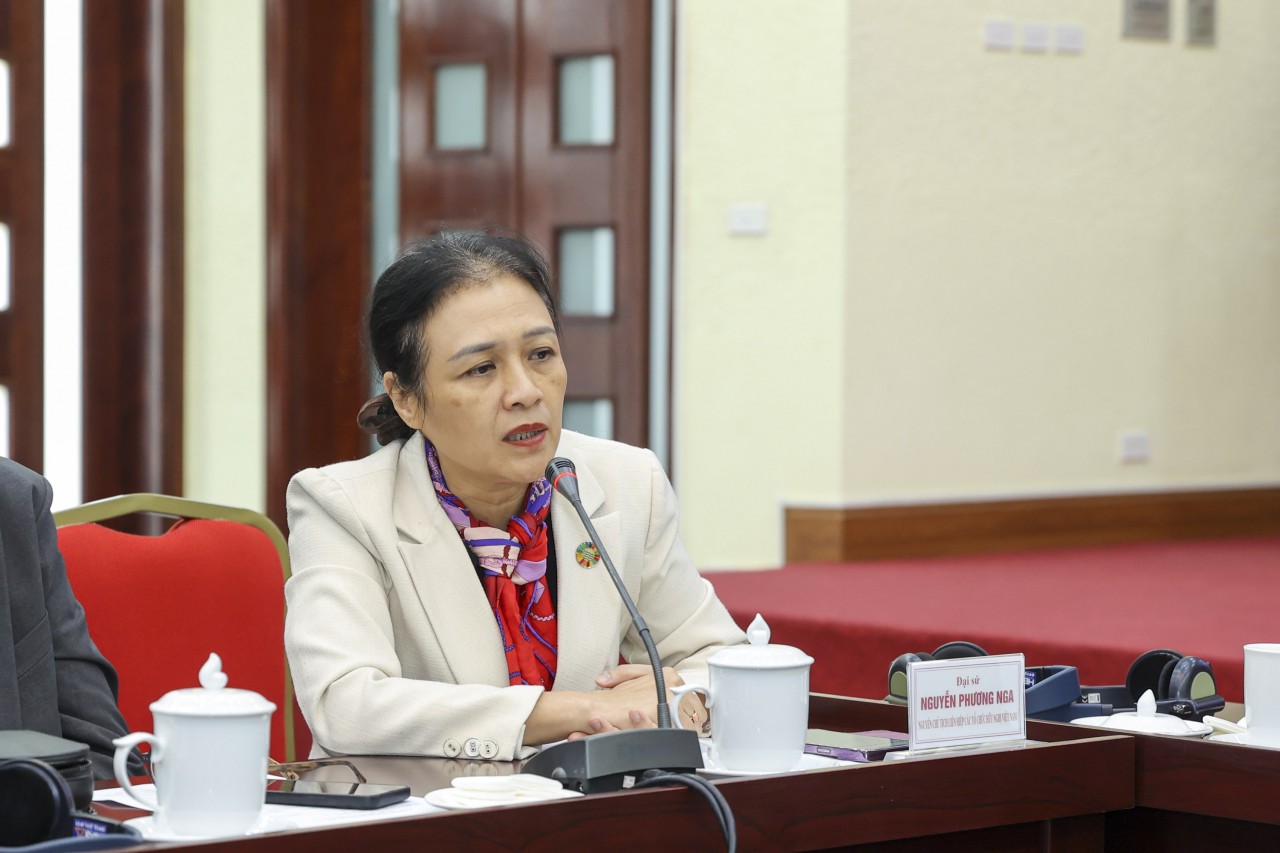 |
| Ambassador Nguyen Phuong Nga, former Deputy Minister of Foreign Affairs and former President of the Viet Nam Union of Friendship Organizations, speaks at the event. (Photo: Dinh Hoa) |
According to Ambassador Nguyen Phuong Nga, as Viet Nam moves toward its goal of becoming a developed nation by 2045, expanding cooperation with the United States in economic, trade, scientific, and technological fields holds great significance. In addition to the positive results achieved through humanitarian projects and war legacy remediation, both sides should further strengthen collaboration in high technology and innovation.
In the era of artificial intelligence, she noted, people-to-people diplomacy needs to be renewed in both content and form, making effective use of online platforms and digital media to expand outreach, especially among young audiences.
Bui The Giang, Vice President of the Viet Nam-US Society, observed that in today’s rapidly changing global landscape, Viet Nam-US people-to-people exchanges should continue to be maintained and further developed, not only in scale but also in quality and effectiveness. He stressed that people’s organizations of both countries should promote flexibility and creativity, while applying digital technology and artificial intelligence in exchange activities, cooperation in human resource development, and the sharing of knowledge and experience.
Bui The Giang outlined several priority directions for future cooperation. First, he emphasized the need to promote the role of the Vietnamese community in the United States as a source of creativity and an important bridge in bilateral relations. Second, he called for strengthening people-to-people collaboration in war legacy remediation, particularly in addressing issues related to Agent Orange, unexploded ordnance, and the search for missing soldiers. At the same time, he stressed the importance of expanding cultural, artistic, sports, tourism, and educational exchanges to spread humanitarian values and enhance mutual understanding between the peoples of the two nations.
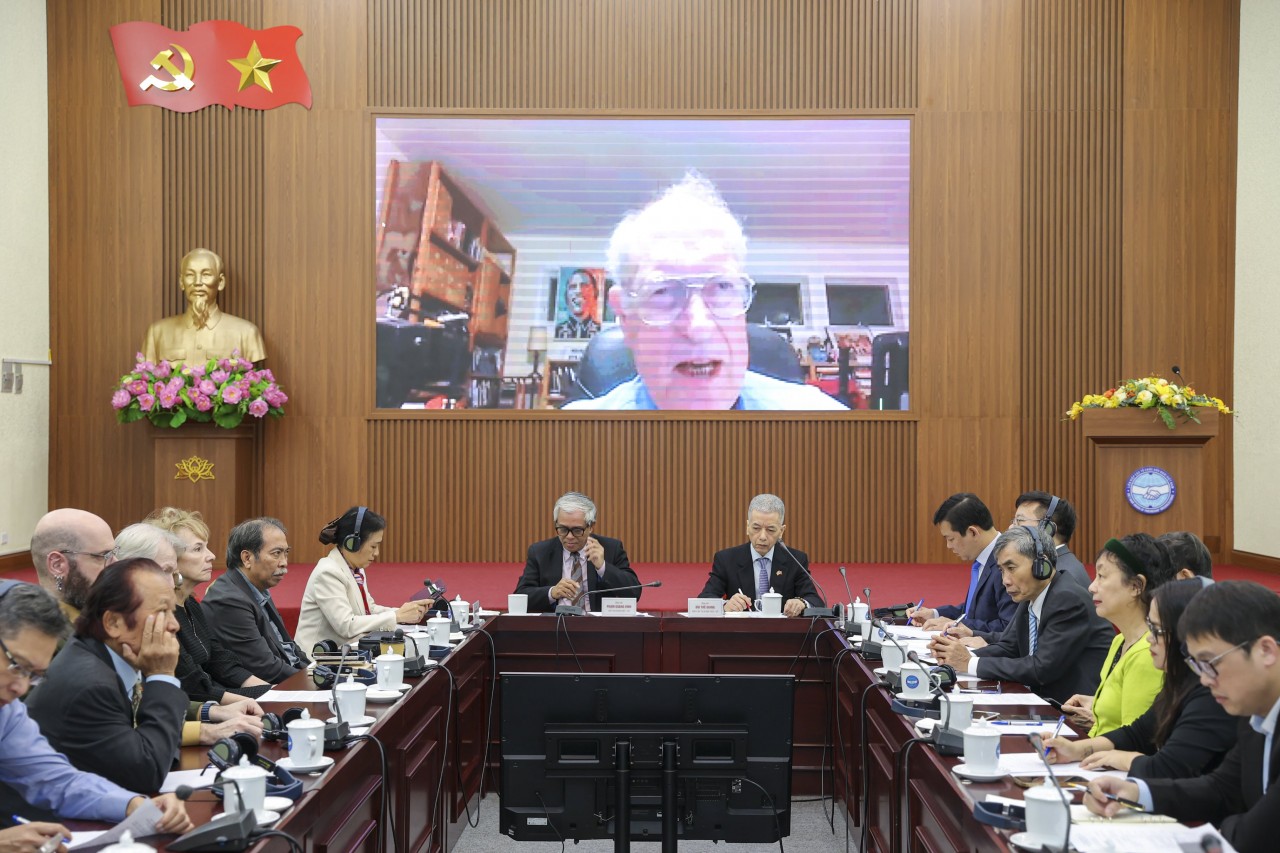 |
| Many American friends and partners joined the discussion online. (Photo: Dinh Hoa) |
From the American side, John McAuliff, Executive Director of the Fund for Reconciliation and Development (FRD), identified four potential areas to promote Viet Nam-US people-to-people exchanges. He noted that expanding programs that introduce Viet Nam to American social activists, civil society organizations, and students, particularly in fields such as environmental protection and community development, in cooperation with Vietnamese partners, would help build a solid foundation for enduring friendship.
McAuliff also proposed creating more opportunities for both domestic and international tour operators to participate in short thematic programs on Viet Nam’s history, economy, and culture. He expressed hope that in the coming period, Viet Nam and the United States would strengthen sister-city and sister-province relationships, gradually forming an extensive network of exchanges that would broaden professional cooperation and foster cultural, economic, and educational connections, thereby creating more opportunities for students and young people of both countries to engage and learn from each other.
Source: Vietnamtimes
